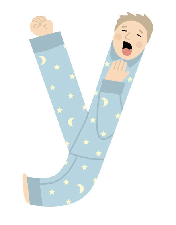Embedded Picture Mnemonic picture files
0 RepliesSince devising the Spelfabet Embedded Picture Mnemonics, illustrator Cat Macinnes and I have received many requests for products containing them: bookmarks, placemats, friezes, flip charts, cards and posters of different sizes, slideshows, you name it. They’ll even make an appearance on The US Reading League’s Reading Buddies TV show at some stage. The Science of Reading community is a creative one.
Sadly, we don’t have capacity to print, store and mail out lots of hard copy resources containing our mnemonics. If you know of an interested publisher, we’d love to hear from them! Even designing and producing all the downloadable resources people have suggested would be a full-time job for quite a while. We aren’t designers, and already have full-time jobs.
We’re therefore making high-resolution versions of the picture files (.png files, for both PC and Apple) available for people to download and use in creating resources for their own students/caseloads/children. This should make it easy to organise them into any phonics teaching sequence, and print customised materials for any group of beginning readers. Click here to download a zipped folder of the whole set.
Over time, we’ve created alternate versions of some mnemonics, thanks to feedback from purchasers, and in an effort to cater to a surprisingly large audience. Our original ‘e/egg’, ‘o/orange’ and ‘u/undies’ mnemonics were OK for Australian English, but ‘e/echo’, ‘o/octopus and ‘u/up’ were needed for speakers of US English. Recently we’ve discovered that some people aren’t keen on ‘y/yoga’, so we’ve added this nice y/yawn mnemonic to the set.
The zipped folder of picture files includes all the mnemonics we’ve produced to date (except the ‘th/path’ and ‘th/weather’ ones, which weren’t a hit), so when there’s a choice, please use the one that suits you best. In parts of rural Australia where doors aren’t often locked, k/kangaroo is probably a better choice than ‘k/key’. On a surf-mad coast ‘ur/surf’ might make more sense than ‘ur/burn’. In the US, ‘air/hair’ and ‘ear/gears’ aren’t needed, but ‘aw/claw’ is, and ‘wh/whale’ might be (in places where ‘witch’ and ‘which’ aren’t homophones).
When you introduce ‘long’ vowels, you might like to make little strips for student desks like this…
…or a strip like this might suit your students/teaching sequence better:
Hooray, everyone will be able to tailor the set to their accent/sequence/needs, including people who speak Englishes other than Australian, British and American. Cat already put time and talent into drawing all the mnemonics, so you might as well use whichever suit you best (yes, we prefer ‘u/undies’, and people keep asking us to bring it back, ha ha).
Artists should be paid properly for their work, so please respect Cat’s copyright and abide by the terms of use included in the pack. Pricing is based on the assumption that each teacher/therapist/parent who buys the files will use them as they see fit with their class/caseload/family members, and not share them with other professionals or use them for commercial purposes. It’s OK for parents to share printouts with little cousins or the kid next door, but if a school with five Early Years teachers wants to use them in a range of resources across five Early Years classrooms, the school should buy five copies.
The picture files are in .png format, which is the best format for storing high-resolution artwork. They are in a zipped folder which looks like this in the Downloads area of the Spelfabet shop:
Download it to your computer, and you’ll be able to unzip it and access the files, and save them somewhere easy to find and use. Don’t panic if you double-click on a file and it opens in your default picture program and looks a bit weird. The pictures should look as you expect when you drop them into documents. Please reduce picture file size first if they’re too big for your purposes, so the resources you make from them don’t take up lots of space on your computer or take ages to print out. Like adding salt when cooking, it’s easy to make files smaller and lower-resolution, but not reverse the process.
As reading researchers might have predicted, lots of people have told us they’ve been surprised how quickly children have learnt sound-letter relationships using the Spelfabet Embedded Picture Mnemonics. We hope that’s true of any young beginners you try them with, and that you find them quick and easy to turn into great, affordable resources that suit your accent, location and teaching sequence.








Leave a Reply